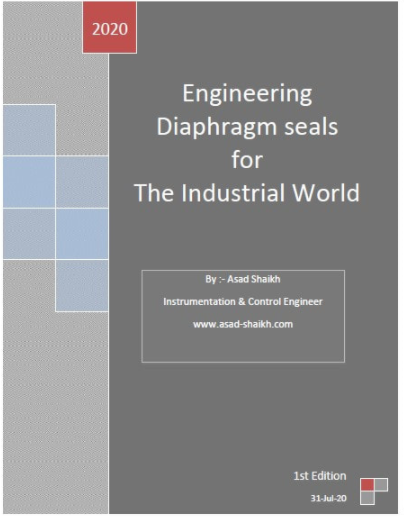What is meant by Grade 2A accuracy in Pressure gauge?
Grade 1A / Grade 2A are an accuracy grade defined in ASME B40.1 (ASME B40.1 is a standard for pressure gauge).
The most commonly used accuracy grade for pressure gauge are grade 1A and 2A
Grade 1A accuracy means that the pressure gauge has a permissible error of 1 % of span for the entire measurement range of pressure gauge. (With Minimum recommended dial size of 1 ½ Inch)
Grade 2A accuracy means that the pressure gauge has a permissible error of 0.5 % of span for the entire measurement range of pressure gauge. (With Minimum recommended dial size of 2 ½ Inch)
Grade 3A accuracy means that the pressure gauge has a permissible error of 0.25 % of span for the entire measurement range of pressure gauge. (With Minimum recommended dial size of 4 ½ Inch)
The most commonly used accuracy grade for pressure gauge are grade 1A and 2A
Grade 1A accuracy means that the pressure gauge has a permissible error of 1 % of span for the entire measurement range of pressure gauge. (With Minimum recommended dial size of 1 ½ Inch)
Grade 2A accuracy means that the pressure gauge has a permissible error of 0.5 % of span for the entire measurement range of pressure gauge. (With Minimum recommended dial size of 2 ½ Inch)
Grade 3A accuracy means that the pressure gauge has a permissible error of 0.25 % of span for the entire measurement range of pressure gauge. (With Minimum recommended dial size of 4 ½ Inch)
Recommended Minimum dial size with respect to accuracy
Note that each accuracy grade defines the minimum recommended pressure gauge dial size.
Grade 1A recommends a minimum dial size of 1 ½ Inch
Grade 2A recommends a minimum dial size of 2 ½ Inch
Grade 3A recommends a minimum dial size of 4 ½ Inch
Note that majority of clients worldwide prefer a dial size of 4 ½ Inch in refineries and chemical plants (The reason being that the pressure gauge readings are visible from a optimum distance)
Example
For Accuracy grade 2A, A dial size of 4 ½ Inch is surely acceptable since it is greater that the min required size of 2 ½ Inch.
However, a dial size of 1 ½ Inch is not recommended for Grade 2A accuracy class as per ASME B40.1.
Grade 1A recommends a minimum dial size of 1 ½ Inch
Grade 2A recommends a minimum dial size of 2 ½ Inch
Grade 3A recommends a minimum dial size of 4 ½ Inch
Note that majority of clients worldwide prefer a dial size of 4 ½ Inch in refineries and chemical plants (The reason being that the pressure gauge readings are visible from a optimum distance)
Example
For Accuracy grade 2A, A dial size of 4 ½ Inch is surely acceptable since it is greater that the min required size of 2 ½ Inch.
However, a dial size of 1 ½ Inch is not recommended for Grade 2A accuracy class as per ASME B40.1.
Is this Free E-book really important?
We as engineers have tremendous responsibility when it comes to engineering safety and being well grounded in the fundamental concepts of engineering.
Did you know about the concept of erosion affecting our instrument and material selection.
(Have a look at the video below of what happened in Husky refinery just because this simple concept of erosion was ignored)
The below E-book covers all these concepts of Erosion, Gasket selection, Fill fluid vaporization, gold plating ,full vacuum protection etc.
I am really humbled and glad that engineers from 150+ companies including the likes of ADNOC, SABIC, DOW chemicals, Bechtel, Fluor, Worley, Technip, Emerson, ABB, Yokogawa etc have found it valuable and interesting.
I hope you would find the E-book valuable and interesting.
We as engineers have tremendous responsibility when it comes to engineering safety and being well grounded in the fundamental concepts of engineering.
Did you know about the concept of erosion affecting our instrument and material selection.
(Have a look at the video below of what happened in Husky refinery just because this simple concept of erosion was ignored)
The below E-book covers all these concepts of Erosion, Gasket selection, Fill fluid vaporization, gold plating ,full vacuum protection etc.
I am really humbled and glad that engineers from 150+ companies including the likes of ADNOC, SABIC, DOW chemicals, Bechtel, Fluor, Worley, Technip, Emerson, ABB, Yokogawa etc have found it valuable and interesting.
I hope you would find the E-book valuable and interesting.
Reference : ASME B40.1 Page 5, Table 1 (Accuracy grade / classes)






